Author Biographies 5
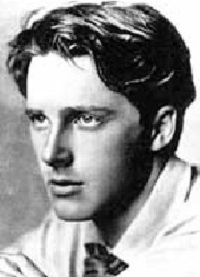 Rupert Brooke
Rupert Brooke
1887-1915
English poet Rupert Chawner Brooke was born in 1887. The son of the Rugby School’s housemaster, Brooke excelled in both academics and athletics. He entered his father’s school at the age of 14. A lover of verse since the age of nine, he won the school poetry prize in 1905.
A year later, he attended King’s College, Cambridge, where he was known for his striking good looks, charm and intellect. While at Cambridge, he developed an interest in acting and was president of the University Fabian Society. Brooke published his first poems in 1909; his first book, Poems, appeared in 1911. While working on his dissertation on John Webster and Elizabethan dramatists, he lived in the house that he made famous by his poem, “The Old Vicarage, Grantchester.”
Popular in both literary and political circles, he befriended Winston Churchill, Henry James and members of the Bloomsbury Group, including Virginia Woolf. Although he was popular, Brooke had a troubled love life. Between 1908 and 1912 he fell in love with three women: Noel Olivier, youngest daughter of the governor of Jamaica; Ka Cox, who preceded him as president of the Fabian Society; and Cathleen Nesbitt, a British actress. None of the relationships were long lasting. In 1912, after his third romance failed, Brooke left England to travel in France and Germany for several months.
Upon his return to England, Brooke received a fellowship at King’s College and spent time in both Cambridge and London. In 1912, he compiled an anthology entitled Georgian Poetry, 1911-12, with Edward Marsh. The Georgian poets wrote in an anti-Victorian style, using rustic themes and subjects such as friendship and love. While critics viewed Brooke’s poetry as too sentimental and lacking depth, they also considered his work a reflection of the mood in England during the years leading up to World War I.
After experiencing a mental breakdown in 1913, Brooke traveled again, spending several months in America, Canada and the South Seas. During his trip, he wrote essays about his impressions for The Westminster Gazette, which were collected in Letters from America (1916). While in the South Seas, he wrote some of his best poems, including “Tiare Tahiti” and “The Great Lover.”
He returned to England at the outbreak of World War I and enlisted in the Royal Naval Division. His most famous work, the sonnet sequence 1914 and Other Poems, appeared in 1915. Later that year, after taking part in the Antwerp Expedition, he died of blood poisoning from a mosquito bite while en route to Gallipoli with the Navy. He was buried on the island of Skyros in the Aegean Sea.
Source: http://www.poets.org/poet.php/prmPID/181
 Bibliography
Bibliography
Press your browser’s BACK button to return to the previous page.
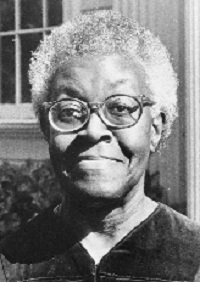 Gwendolyn Brooks
Gwendolyn Brooks
1917-2000
Gwendolyn Elizabeth Brooks (June 7, 1917-December 3, 2000) was an American poet. She was appointed Poet Laureate of Illinois in 1968 and Poet Laureate Consultant in Poetry to the Library of Congress in 1985.
Brooks was born in Topeka, Kansas, to David Anderson Brooks and Keziah Wims, their first child. Her mother was a former school teacher who left teaching for marriage and motherhood, and her father, the son of a runaway slave who fought in the Civil War, had given up his ambition to become a doctor to work as a janitor because he could not afford to attend medical school. When Brooks was only six weeks old, her family moved to Chicago, Illinois, where she grew up. She went by the nickname, “Gwendie,” which her close friends called her.
Brooks published her first poem in a children’s magazine at the age of 13. When Brooks was 16 years old, she had compiled a portfolio of around 75 published poems. Aged 17, Brooks stuck to her roots and began submitting her work to Lights and Shadows, the poetry column of The Chicago Defender, an African-American newspaper. During this same period, she also attended Wilson Junior College and graduated in 1936. After publishing more than 75 poems and failing to obtain a position with The Chicago Defender, Brooks began to work a series of typing jobs.
Her first book of poetry, A Street in Bronzeville, published in 1945 by Harper and Row, brought her instant critical acclaim. She received her first Guggenheim Fellowship and was one of the “Ten Young Women of the Year” in Mademoiselle magazine. In 1950, she published her second book of poetry, Annie Allen, which won her Poetry magazine’s Eunice Tietjens Prize and the Pulitzer Prize for poetry, the first given to an African-American.
After John F. Kennedy invited her to read at a Library of Congress poetry festival in 1962, she began her career teaching creative writing. She taught at Columbia College Chicago, Northeastern Illinois University, Chicago State University, Elmhurst College, Columbia University, Clay College of New York and the University of Wisconsin-Madison. In 1967, she attended a writer’s conference at Fisk University where, she said, she rediscovered her blackness. This rediscovery is reflected in her work, “In the Mecca,” a long poem about a mother searching for her lost child in a Chicago apartment building. “In the Mecca” was nominated for the National Book Award for poetry.
Brooks was made Poet Laureate of Illinois in 1968. In 1985, she became the Library of Congress’ Consultant in Poetry, a one-year position whose title changed the next year to Poet Laureate. In 1988, she was inducted into the National Women’s Hall of Fame. In 1994, she was chosen as the National Endowment for the Humanities’ Jefferson Lecturer, one of the highest honors for American literature and the highest award in the humanities given by the federal government. In 1995, she was presented with the National Medal of Arts. Other awards she received included the Frost Medal, the Shelley Memorial Award and an award from the American Academy of Arts and Letters. Brooks was awarded more than 75 honorary degrees from colleges and universities worldwide. In 1995, she was honored as the first Woman of the Year by the Harvard Black Men’s Forum.
Brooks died on December 3, 2000, aged 83, at her southside Chicago home. She is buried at Lincoln Cemetery in Blue Island, Illinois.
Source: http://en.wikipedia.org/wiki/Gwendolyn_Brooks
 Bibliography
Bibliography
Press your browser’s BACK button to return to the previous page.
 Charles Brockden Brown
Charles Brockden Brown
1771-1810
Charles Brockden Brown was critically acclaimed in both America and Europe for his novels that adapted the Gothic style to the American landscape, substituting urban decay and untamed wilderness for castles and dungeons.
Brown was born on January 17, 1771, in Philadelphia, to Quaker parents, Elijah and Mary Armitt Brown. He grew up amid the excitement and turmoil of the colonies in revolt, even witnessing the arrest and temporary banishment to Virginia of his wealthy merchant father, whose Quaker pacifism led to accusations of being a British sympathizer. Brown entered the Friends Latin School in Philadelphia at the age of 11 and studied under the distinguished Robert Proud, graduating at the age of 17. Instead of attending college, Brown initially complied with his family’s wishes and began working as a lawyer’s apprentice to Alexander Wilcocks, but he became disenchanted with the profession by 1793. All the while, he continued to nurture his literary skills and in 1786 joined the Belles Letters Club of Philadelphia. In 1789, he published a series of essays in Columbian Magazine under the title, “The Rhapsodist.”
In 1796, Brown moved to New York and joined the Friendly Club, a group of intellectuals interested in the social reformist ideas of Mary Wollstonecraft and William Godwin. In 1798, Brown published two novels – Alcuin: A Dialogue, which was a critique of marriage and its restrictions for women; and Wieland; or the Transformation.
Brown drew upon his close encounters with disease in several of his works, notably Ormond and the first part of Arthur Mervyn, both published in 1799. In 1799, Brown also published his fourth novel, Edgar Huntly.
In 1801, Brown published two novels in the sentimental style, Clara Howard and Jane Talbot. At this point, Brown entered the family’s trading business with his brothers. In 1803, he published two political pamphlets critical of Thomas Jefferson’s policies regarding the purchase of the Louisiana Territory: “An Address to the Government of the United States, on the Cession of Louisiana to the French” and “Monroe’s Embassy, or the Conduct of the Government, in Relation to Our Claims to the Navigation of the Mississippi.” Though Brown’s motives in these pamphlets are not entirely clear, they were apparently quite popular and gave him the notoriety that had eluded him as a novelist.
In 1803, Brown launched another periodical, The Literary Magazine and American Register, where he published “somnambulism” in May 1805. This successful periodical ran until 1806, when it was reconfigured as the semi-annual American Register, or General Repository of History, Politics and Science, which ran until 1810.
In 1804, Brown translated and published with the original notes Volney’s A View of the Soil and Climate of the United States. Geography had long been an interest for Brown. At the time of his death, he was working on his own geographical study, “System of General Geography; Containing a Topological, Statistical and Descriptive Survey of the Earth” (the manuscript has been lost). In 1809 he wrote another anti-Jefferson pamphlet, on the trade embargo, “An Address to the Congress of the United States on the Utility and Justice of Restrictions Upon Foreign Commerce.” This was his final publication.
Brown died at the age of 39 from tuberculosis on February 22, 1810 in Philadelphia.
Source: http://college.cengage.com/english/lauter/heath/4e/students/author_pages/eighteenth/brown_ch.html
 Bibliography
Bibliography
Press your browser’s BACK button to return to the previous page.
 Dan Brown
Dan Brown
1964-
Dan Brown (born June 22, 1964) is an American author of thriller fiction, best known for the 2003 bestselling novel, The Da Vinci Code. Brown’s novels, which are treasure hunts set in a 24-hour time period, feature the recurring themes of cryptography, keys, symbols, codes and conspiracy theories. His books have been translated into more than 40 languages and, as of 2009, sold more than 80 million copies. Two of them, The Da Vinci Code and Angels & Demons, have been adapted into feature films.
Source: http://en.wikipedia.org/wiki/Dan_Brown
 Bibliography
Bibliography
Press your browser’s BACK button to return to the previous page.
 Sterling Allen Brown
Sterling Allen Brown
1901-1989
Sterling Allen Brown (May 1, 1901-January 13, 1989) was an African-American professor, author of works on folklore, poet and literary critic. He was interested chiefly in black culture of the southern United States.
Brown was born on the campus of Howard University in Washington D.C. His early childhood was spent on a farm on Whiskey Bottom Road in Howard County, Maryland. His father, Sterling N. Brown, a former slave, was a prominent minister and professor at Howard University Divinity School. His mother, Grace Adelaide Brown, taught in D.C. public schools for more than 50 years. Brown was educated at Dunbar High School and graduated as the top student. He received a scholarship to attend Williams College. Graduating from Williams Phi Beta Kappa in 1922, he continued his studies at Harvard University, receiving an M.A. a year later.
The same year, he became an English teacher at Virginia Theological Seminary, a position he would hold for the next three years. In 1927 he married Daisy Turnbull. They adopted two children.
Brown began his teaching career with positions at several universities, including Lincoln University and Fisk University, before returning to Howard in 1929. He was a professor there for 40 years. He taught and wrote about African-American literature and folklore. He was a pioneer in the appreciation of this genre.
Brown was known for introducing his students to concepts then popular in jazz which, along with blues, spirituals and other forms of black music, formed an integral component of his poetry.
In addition to his career at Howard University, Brown served as a visiting professor at Vassar College, New York University (NYU), Atlanta University and Yale University. In 1969, Brown retired from his faculty position at Howard and turned full-time to poetry
In 1933, Brown published his first book of poetry, Southern Road. It was a collection of poems with rural themes and treated the simple lives of poor, black, country folk with poignancy and dignity. It also used authentic dialect and structures. Despite the success of this book, he struggled to find a publisher for the followup, No Hiding Place.
Brown is considered part of the Harlem Renaissance artistic tradition, although he spent the majority of his life in the Brookland neighborhood of Northeast Washington, D.C.
Source: http://en.wikipedia.org/wiki/Sterling_Allen_Brown
 Bibliography
Bibliography
Press your browser’s BACK button to return to the previous page.
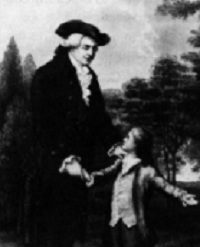 William Hill Brown
William Hill Brown
1765-1793
William Hill Brown (November 1765-September 2, 1793) was an American novelist, the author of what is usually considered the first American novel, The Power of Sympathy (1789), and Harriot; or the Domestick Reconciliation, as well as the serial essay, “The Reformer,” published in Isaiah Thomas’ Massachusetts Magazine. In both, Brown proves an extensive knowledge of European literature (for example, of Clarissa by Samuel Richardson) but tries to lift the American literature from the British corpus by the choice of an American setting.
Brown also wrote the tragedy, West Point Preserved, about the British spy, Major John Andre.
William Hill Brown was born in Boston in 1765. Much of his personal history has been left unrecorded: Only three examples of his handwriting remain. Two of these examples are simply inscriptions in books. The most telling of the three examples, however, was a letter that Brown wrote to a friend on April 29, 1784. The letter reveals that his appearance reflects that of an “Old Dr. Chauncy,” suggesting a small, frail stature. Brown also reveals in his letter that he was victim of a debilitating illness that kept him indoors for approximately four months.
Brown died in Murfreesboro, North Carolina, in 1793, aged 27.
Source: http://en.wikipedia.org/wiki/William_Hill_Brown
 Bibliography
Bibliography
Press your browser’s BACK button to return to the previous page.
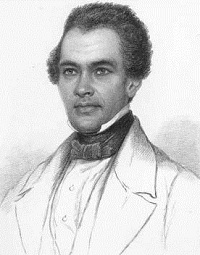 William Wells Brown
William Wells Brown
1814-1884
William Wells Brown (November 6, 1814-November 6, 1884) was a prominent African-American abolitionist lecturer, novelist, playwright and historian. Born into slavery in the southern United States, Brown escaped to the North in 1834, where he worked for abolitionist causes and was a prolific writer.
Brown spent the majority of his youth in St. Louis. His masters hired him out to work on the Missouri River, then a major thoroughfare for steamships and the slave trade. He made several attempts to escape and, on New Year’s Day of 1834, he successfully slipped away from a steamboat when docked in Cincinnati, Ohio, a free state. He adopted the name of Wells Brown, a Quaker friend, who helped him after his escape by providing food, clothes and some money.
From 1836 to about 1845, Brown made his home in Buffalo, New York, where he worked as a steamboat man on Lake Erie. He used his position to aid escaped slaves to freedom in Canada as a conductor for the Underground Railroad. Brown became active in the abolitionist movement in Buffalo by joining several anti-slavery societies and the Negro Convention Movement. In 1849, Brown left the United States to travel in the British Isles to lecture against slavery. He stayed in England until 1854, lecturing widely to local antislavery circuits to build support for the U.S. movement.
In 1849, Brown was selected to attend the International Peace Conference in Paris. Based on this journey, Brown wrote Three Years in Europe: or Places I Have Seen and People I Have Met. His travel account was popular with middle-class readers as he recounted sightseeing trips to the foundational monuments of European culture.
In 1847, he published his memoir, The Narrative of William W. Brown, a Fugitive Slave, Written by Himself, which became a bestseller second only to Frederick Douglass’ slave narrative. He critiques his master’s lack of Christian values and the brutal use of violence in master-slave relations. When Brown lived in Britain he wrote more works, including travel accounts and plays.
His first novel, entitled Clotel, or the President’s Daughter: A Narrative of Slave Life in the United States, is believed to be the first novel written by an African-American. Brown also wrote several historical works, including The Black Man: His Antecedents, His Genius and His Achievements (1863), The Negro in the American Rebellion (1867), considered the first historical work about black soldiers in the Civil War, The Rising Son (1873) and another memoir, My Southern Home (1880).
During the American Civil War and in the decades that followed, Brown continued to publish fiction and nonfiction books, securing his reputation as one of the most prolific African-American writers of his time. He also played a more active role in recruiting blacks to fight in the Civil War.
William Wells Brown died on his birthday in Chelsea in 1884 at the age of 70.
Source: http://en.wikipedia.org/wiki/William_Wells_Brown
 Bibliography
Bibliography
Press your browser’s BACK button to return to the previous page.
 Sir Thomas Browne
Sir Thomas Browne
1605-1682
Sir Thomas Browne (October 19, 1605-October 19, 1682) was an English author of varied works that reveal his wide learning in diverse fields including medicine, religion, science and the esoteric.
The son of a silk merchant from Upton, Cheshire, he was born in the parish of St. Michael, Cheapside, in London. His father died while he was still young and he was sent to school at Winchester College. In 1623, Browne went to Oxford University. He graduated from Pembroke College, Oxford, in 1626 after which he studied medicine at various Continental universities, including Leiden, where he received an MD in 1633. He settled in Norwich in 1637, where he practiced medicine and lived until his death in 1682.
His first well-known work bore the Latin title Religio Medici (The Religion of a Physician). This work was circulated in manuscript among his friends, and it caused Browne some surprise when an unauthorized edition appeared in 1642, since the work contained a number of religious speculations that might be considered unorthodox: In Religio Medici, Browne had confirmed his belief in the existence of witches.
In 1646, Browne published the encyclopaedia, Pseudodoxia Epidemica, or, Enquiries into Very Many Received Tenets, and Commonly Presumed Truths, whose title refers to the prevalence of false beliefs and “vulgar errors.”
Browne’s last publications during his lifetime (1658) were two philosophical discourses that are intrinsically related to each other; the first, Hydriotaphia, Urn Burial or a Brief Discourse of the Sepulchral Urns Lately Found in Norfolk, occasioned by the discovery of some Bronze Age burials in earthenware vessels found in Norfolk. This discovery inspired Browne to meditate upon the funerary customs of the world and the fleetingness of earthly fame and reputation.
Urn-Burial’s “twin” discourse is The Garden of Cyrus, or the Quincunciall Lozenge, or Network Plantations of the Ancients, Artificially, Naturally, and Mystically Considered, whose subject is the quincunx, the arrangement of five units like the five-spot in dice, which Browne uses to demonstrate the evidence of the Platonic forms and intelligent design existing throughout Nature.
Sir Thomas Browne died on October 19, 1682, his 77th birthday.
Source: http://en.wikipedia.org/wiki/Thomas_Browne
 Bibliography
Bibliography
Press your browser’s BACK button to return to the previous page.
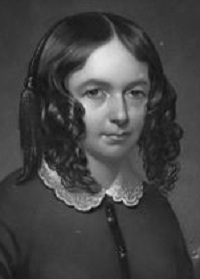 Elizabeth Barrett Browning
Elizabeth Barrett Browning
1806-1861
Elizabeth Barrett Browning (March 6, 1806-June 29, 1861) was one of the most prominent poets of the Victorian era. Her poetry was widely popular in both England and the United States during her lifetime.
Elizabeth Barrett Moulton-Barrett was born in Coxhoe Hall, between the villages of Coxhoe and Kelloe in County Durham, England. Her parents were Edward Barrett Moulton Barrett and Mary Graham Clarke; Elizabeth was the eldest of their 12 children. In 1809, her father bought Hope End, a 500-acre estate near the Malvern Hills in Ledbury, Herefordshire, where Elizabeth spent her childhood.
Browning’s first known poem was written at the age of six or eight, “On the Cruelty of Forcement to Man.” Her first independent publication was “Stanzas Excited by Reflections on the Present State of Greece” in The New Monthly Magazine of May 1821; this was followed in the same publication two months later by “Thoughts Awakened by Contemplating a Piece of the Palm which Grows on the Summit of the Acropolis at Athens.” Her first collection of poems, An Essay on Mind, with Other Poems, was published in 1826 and reflected her passion for Byron and Greek politics.
At about age 15 Browning began to battle with a lifelong illness, which caused her to be frail and weak. She began to take opiates for the pain: Laudanum (an opium concoction) then morphine, commonly prescribed at the time. She would become dependent on them for much of her adulthood; the use from an early age would have contributed to her frail health.
Between 1841-44 Browning was prolific in poetry, translation and prose. The poem, “The Cry of the Children,” published in 1842 in Blackwoods, condemned child labor and helped bring about child labor reforms by rousing support for Lord Shaftesbury’s Ten Hours Bill (1844). At about the same time, she contributed some critical prose pieces to Richard Henry Horne’s A New Spirit of the Age. In 1844, she published two volumes of Poems, which included “A Drama of Exile,” “A Vision of Poets” and “Lady Geraldine’s Courtship” and two substantial critical essays for 1842 issues of The Athenaeum.
Her 1844 volume, Poems, made her one of the most popular writers in the country at the time and inspired Robert Browning to write to her, telling her how much he loved her work. Browning met Elizabeth on May 20, 1845, and so began one of the most famous courtships in literature.
She died on June 29, 1861 in Rome.
Source: http://en.wikipedia.org/wiki/Elizabeth_Barrett_Browning
 Bibliography
Bibliography
Press your browser’s BACK button to return to the previous page.
 Robert Browning
Robert Browning
1812-1889
Robert Browning (May 7, 1812-December 12, 1889) was an English poet and playwright whose mastery of dramatic verse, especially dramatic monologues, made him one of the foremost Victorian poets.
Browning was born in Camberwell, the only son of Robert and Sarah Anna Browning. His father was a well-paid clerk for the Bank of England, earning about £150 per year. Robert’s father, a literary collector, amassed a library of around 6,000 books, many of them rare. Thus, Robert was raised in a household of significant literary resources. His mother, to whom he was very close, was a devout nonconformist and a talented musician.
By 12, Browning had written a book of poetry that he later destroyed when no publisher could be found. After being at one or two private schools, and showing an insuperable dislike to school life, he was educated at home by a tutor via the resources of his father’s extensive library. By the age of 14 he was fluent in French, Greek, Italian and Latin. At the age of 16, he studied Greek at University College, London, but left after his first year. He refused a formal career and ignored his parents’ remonstrations, dedicating himself to poetry. He stayed at home until the age of 34, financially dependent on his family until his marriage. His father sponsored the publication of his son’s poems. Browning travelled widely, joining a British diplomatic mission to Russia in 1834, later journeying to Italy 1838 and 1844.
Browning’s career began with the publication of the anonymous poem “Pauline.” The long poem, “Paracelsus,” about the renowned doctor and alchemist, gave him a reputation as a poet of distinguished promise on the London scene. Browning wrote the play, Strafford, performed in 1837, going on to write eight plays in all, including Pippa Passes (1841) and A Soul’s Tragedy (1846). A troubled production of A Blot on the ’Scutcheon (1843) was followed by the publication of the experimental and politically radical long poem, “Sordello” (1840), which were both met with widespread derision.
In 1845, Browning met the poet Elizabeth Barrett, six years his elder, who lived as a semi-invalid in her father’s house in Wimpole Street, London. They began regularly corresponding and gradually a romance developed between them, leading to their elopement on September 12, 1846.
From the time of their marriage and until Elizabeth’s death, the Brownings lived in Italy, residing first in Pisa, and then, within a year, finding an apartment in Florence at Casa Guidi. In Florence, Browning worked on the poems that eventually comprised his two-volume Men and Women (1855), for which he is now well known. In 1868, after five years of work, he completed and published the long blank-verse poem, “The Ring and the Book.”
In the remaining years of his life Browning travelled extensively. After a series of long poems published in the early 1870s, of which “Fifine at the Fair” and “Red Cotton Night-Cap Country” were the best-received, he published the volume Pacchiarotto, and How He Worked in Distemper, which included an attack against Browning’s critics. In 1887, Browning produced the major work of his later years, Parleyings with Certain People of Importance in Their Day. His last volume, Asolando (1889), was published on the day of his death.
Browning died at his son’s home, Ca’ Rezzonico, in Venice on December 12, 1889.
Source: http://en.wikipedia.org/wiki/Robert_Browning
 Bibliography
Bibliography
Press your browser’s BACK button to return to the previous page.
 Orestes Augustus Brownson
Orestes Augustus Brownson
1803-1876
Orestes Augustus Brownson was a New England intellectual and activist, preacher, labor organizer and noted Catholic convert and writer. Brownson was a publicist, a career that spanned his affiliation with the New England Transcendentalists, through his subsequent conversion to Roman Catholicism.
Brownson was born on September 16, 1803 to Sylvester Augustus Brownson and Relief Metcalf, who were farmers in Stockbridge, Vermont. Sylvester Brownson died when Orestes was young and Relief decided to give her son up to a nearby adoptive family when he was six years old. The family raised him under the strict confines of Calvinist Congregationalism on a small farm in Royalton, Vermont. He did not receive much schooling but he immensely enjoyed reading books. Among these were volumes by Homer and Locke and the Bible. In 1817, when he was 14, Orestes attended an academy briefly in New York. This was the extent of his formal education.
In 1822, Brownson was baptized in the Presbyterian Church in Ballston, New York, but he quickly complained that Presbyterians only associated with themselves and that the Calvinist doctrines of predestination and eternal sin were too harsh. After withdrawing from Presbyterianism in 1824 and teaching at various schools in upstate New York and Detroit, Brownson applied to be a Universalist preacher. Universalism, for Brownson, represented the only liberal variety of Christianity he knew. However, Universalism also did not quell his desire for religious understanding. Later, rejecting Universalism, he moved to Ithaca, New York, where he became the pastor of a Unitarian community. There, he began publishing the magazine The Philanthropist. In it, he could express his ideas off the pulpit because he thought of himself as a better journalist than preacher.
After the demise of The Philanthropist in 1832, Brownson moved to Walpole, New Hampshire, where he was a part of the Transcendentalist movement that swept through the Boston Unitarian community. In 1836, he moved to Chelsea, Massachusetts, to set up his own church called “The Society for Christian Union and Progress” and published his first book, New Views of Christianity, Society and the Church, which combined Transcendental religious views with radical social egalitarianism, angrily criticizing the unequal social distribution of wealth as un-Christian and unprincipled.
In 1838, he founded The Boston Quarterly Review and served as its editor and main contributor for four years. Brownson’s writing contributions were political, intellectual and religious essays. In 1840, he published his semi-autobiographical work, Charles Elwood; or the Infidel Converted.
In 1844, he converted to Catholicism and became politically conservative. He renounced the errors of his past, including Transcendentalism and liberalism, and wrote articles dedicated to converting America to Catholicism.
Brownson died on April 17, 1876 in Detroit, aged 72.
Source: http://en.wikipedia.org/wiki/Orestes_Brownson
 Bibliography
Bibliography
Press your browser’s BACK button to return to the previous page.
 Joseph Bruchac
Joseph Bruchac
1942-
Joseph Bruchac is a writer of books relating to the Indigenous peoples of the Americas, with a particular focus on northeastern Native American and Anglo-American lives and folklore. He has published works of poetry, novels and short stories. He is from Saratoga Springs, New York, and is of Abenaki, English and Slovak ethnicity. Among his works are the novel, Dawn Land (1993), and its sequel, Long River (1995), which are about a young Abenaki man in pre-European contact times.
With more than 120 books and numerous awards to his credit, Bruchac is best known for his work as a Native writer and storyteller. He is also known for his generous efforts in encouraging other Native writers and performing artists. As one of the founders of the Wordcraft Circle of Native American Writers and Storytellers, he has helped numerous Native authors get their work published. He began publishing in 1971 and has collaborated on eight books with his son, Jim.
Bruchac was a varsity heavyweight wrestler at Cornell University and is a former high school and junior high wrestling coach. For more than three decades, he has also been a devoted student of the martial arts. He holds the ranks of pengawal and pendekar in Pencak Silat, the martial art of Indonesia, and has studied various forms of Tai Chi, capoeira, kung fu wu su and Brazilian Jiu-Jitsu with numerous teachers. He does not regard himself as a master.
Bruchac lives in Greenfield Center, New York, with Carol, his wife of 42 years and his partner in running the Greenfield Review Press, Bowman Books and the Native American Authors Catalogue. Bruchac is also a well-loved performer, known for outstanding ability in storytelling and for the playing of Native instruments, including the hand drum, wooden flute and the double wooden flute, which produces two notes at the same time. He performs with his sister, Marge Bruchac, and his sons, Jim and Jesse, as part of The Dawnland Singers.
His most recent novel, March Toward the Thunder, features Native men who enlisted in the American Civil War; it is based on the experiences of his great-grandfather, Louis Bowman. Joseph Bruchac has also written Code Talker: A Book about the Navajo Marines. Code talkers were used in World War II.
Source: http://en.wikipedia.org/wiki/Joseph_Bruchac
 Bibliography
Bibliography
Press your browser’s BACK button to return to the previous page.
 Mary Brunton
Mary Brunton
1778-1818
Mary Brunton (nee Balfour) (November 1, 1778-December 7, 1818) was a Scottish novelist. She was the daughter of Colonel Thomas Balfour of Elwick, a British Army officer, and Frances Ligonier, sister of the second earl of Ligonier. She was born in the Orkney Islands. Her early education was limited, though her mother did teach her music, Italian and French.
Around 1798, Mary met and fell in love with the Reverend Alexander Brunton, a Church of Scotland minister, who later became a Professor of Oriental Languages in the University of Edinburgh. Although Mary’s mother disapproved of the match, she married Brunton in 1798 and they had a happy marriage, which included companionship and mutual interests. After 20 years of marriage, Mary finally became pregnant at age 40, but she died in 1818 in Edinburgh after giving birth to a still-born son.
Brunton started to write her first novel in 1809. Like many of her fellow novelists, she also recorded bits and pieces of daily life in a journal. In her lifetime, Brunton wrote two complete novels, Self-Control (1811) and Discipline (1814). After her death, her unfinished work Emmeline, along with a memoir, was published by her husband in 1819.
Source: http://en.wikipedia.org/wiki/Mary_Brunton#Bibliography
 Bibliography
Bibliography
Press your browser’s BACK button to return to the previous page.
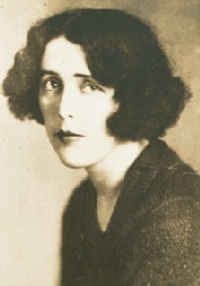 Louise Bryant
Louise Bryant
1885-1936
Louise Bryant (December 5, 1885-January 6, 1936) was an American journalist and writer. She was best known for her Marxist and anarchist beliefs and her essays on radical political and feminist themes. Bryant published articles in several radical left journals during her life, including Alexander Berkman’s The Blast.
Bryant was born Anna Louisa Mohan in San Francisco, California. Her father, Hugh Mohan, was a coal miner from Pittsburgh, Pennsylvania, who made his way west with the Railroad crews. Her mother remarried Sheridan Bryant and Louise took her stepfather’s name. The family moved to Nevada, where Louise was a student at the University of Nevada. She later moved to the University of Oregon in Eugene. Her senior thesis was about the Modoc Indian War of Southern Oregon and was completed in 1908. Bryant returned to San Francisco to become a journalist after graduation but was soon nudged, for financial reasons, to teach “school” in Salinas, California. She moved back to Oregon and became involved with the Suffrage Movement in Portland and worked for The Spectator.
Bryant met journalist John Reed in Portland, Oregon while he was visiting his family after attending Harvard and moving in radical circles of the Village in New York City. Reed and Bryant together traveled to Russia in 1917, where they witnessed the October Revolution. They both attended the first Bolshevik political trial, that of Sofia Panina. Both published books about their experiences in Russia: Reed’s Ten Days that Shook the World and Bryant’s Six Red Months in Russia. Bryant was with Reed when he died of typhus in 1920. He is one of three Americans to be buried at the Kremlin in Moscow.
Bryant became a leading reporter for the Hearst newspaper chain. After Reed’s death, Bryant married William C. Bullitt in early 1924. The couple had one child, Anne. Becoming ill with what was diagnosed in 1928 as adiposis dolorosa, “Dercum’s Disease,” and despite several treatments, including stays at Dr. Dengler’s Sanatorium in Baden Baden, Germany, and a few sessions with Sigmund Freud in 1929, Bryant continued efforts to be a wife, mother and writer. Bullitt divorced Bryant in 1930, upon learning of her alleged lesbian affairs in Paris.
Bryant died on January 6, 1936, of a brain hemorrhage in Paris and is buried in Des Gonards Cemetery in Versailles, France.
Source: http://en.wikipedia.org/wiki/Louise_Bryant
 Bibliography
Bibliography
Press your browser’s BACK button to return to the previous page.
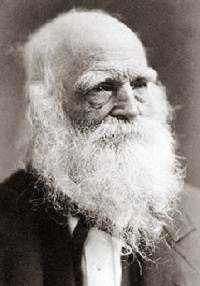 William Cullen Bryant
William Cullen Bryant
1794-1878
William Cullen Bryant (November 3, 1794-June 12, 1878) was an American romantic poet, journalist and long-time editor of The New York Evening Post.
Bryant was born in a log cabin near Cummington, Massachusetts. After just two years at Williams College, he studied law in Worthington and Bridgewater in Massachusetts and was admitted to the bar in 1815. He then began practicing law in nearby Plainfield, walking the seven miles from Cummington every day. On one of these walks, in December 1815, he noticed a single bird flying on the horizon; the sight moved him enough to write, “To a Waterfowl.”
Bryant developed an interest in poetry early in life. Under his father’s tutelage, he emulated Alexander Pope and other Neo-Classic British poets. “The Embargo,” a savage attack on President Thomas Jefferson published in 1808, reflected Dr. Bryant’s Federalist political views. The youth wrote little poetry while preparing to enter Williams College as a sophomore but, upon leaving Williams after a single year and then beginning to read law, he regenerated his passion for poetry through encounter with the English pre-Romantics and, particularly, William Wordsworth.
Although “Thanatopsis,” his most famous poem, has been said to date from 1811, it is much more probable that Bryant began its composition in 1813, or even later. What is known about its publication is that his father took some pages of verse from his son’s desk and submitted them, along with his own work, to The North American Review in 1817. The Review was edited by Edward Tyrrel Channing at the time and, upon receiving it, read the poem to his assistant, who immediately exclaimed, “That was never written on this side of the water!” Someone at The North American joined two of the son’s discrete fragments, gave the result the Greek-derived title “Thanatopsis” (meditation on death), mistakenly attributed it to the father and published it. With all the errors, it was well-received and soon Bryant was publishing poems with some regularity.
On January 11, 1821, Bryant, still striving to build a legal career, married Frances Fairchild. Soon after, having received an invitation to address the Harvard University Phi Beta Kappa Society at the school’s August commencement, Bryant spent months working on “The Ages,” a panorama in verse of the history of civilization, culminating in the establishment of the United States. That poem led a collection, entitled Poems, which he arranged to publish on the same trip to Cambridge. His career as a poet was launched.
He moved to New York City where, in 1825, he was hired as editor, first of The New York Review, then of The United States Review and Literary Gazette. After two years, he became assistant editor of The New York Evening Post, a newspaper founded by Alexander Hamilton that was surviving precariously. Within two years, he was editor-in-chief and a part owner. He remained the editor-in-chief for half a century (1828-78). Eventually, The Evening Post became not only the foundation of his fortune but also the means by which he exercised considerable political power in his city, state and nation.
In his last decade, Bryant shifted from writing his own poetry to translating Homer. He assiduously worked on The Iliad and The Odyssey from 1871 to 1874. He is also remembered as one of the principal authorities on homeopathy and as a hymnist for the Unitarian Church – both legacies of his father’s enormous influence on him.
Bryant died in 1878 of complications from an accidental fall suffered after participating in a Central Park ceremony honoring Italian patriot Giuseppe Mazzini.
Source: http://en.wikipedia.org/wiki/William_Cullen_Bryant
 Bibliography
Bibliography
Press your browser’s BACK button to return to the previous page.
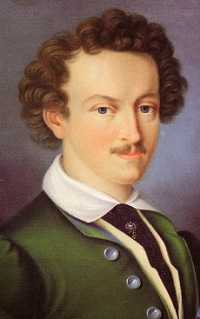 Georg Buchner
Georg Buchner
1813-1837
Karl Georg Buchner (October 17, 1813-February 19, 1837) was a German dramatist and writer of poetry and prose. Born in Goddelau near Darmstadt, Hesse-Darmstadt, the son of a doctor, Buchner attended a Humanist secondary school that focused on modern languages, including French, Italian and English. Nevertheless, Buchner studied medicine in Strasbourg.
While Buchner continued his studies he established a secret society dedicated to the revolutionary cause. With the help of the evangelical theologian Friedrich Ludwig Weidig, he published “Der Hessische Landbote,” a revolutionary pamphlet criticizing social grievances in the Grand Duchy of Hesse. The authorities charged them with treason and issued a warrant of apprehension. While Weidig was arrested, tortured and died imprisoned in Darmstadt, Buchner fled across the border to Strasbourg, where he wrote most of his literary work and translated two plays by Victor Hugo: Lucrece Borgia and Marie Tudor.
Two years later, his dissertation, “Memoire sur le Systeme Nerveux du Barbeaux (Cyprinus barbus L.),” was published in Paris and Strasbourg. He was influenced by the utopian communist theories of Francois-Noel Babeuf and Claude Henri de Saint-Simon. In October 1836, after receiving his doctorate and being appointed by the University of Zurich as a lecturer in anatomy, Buchner relocated to Zurich, where he spent his final months writing and teaching until he died of typhus at the age of 23.
In 1835, his first play, Dantons Tod (Danton’s Death), about the French Revolution, was published, followed by Lenz, a novella based on the life of the sturm und drang poet Jakob Michael Reinhold Lenz. In 1836, his second play, Leonce and Lena, portrayed the nobility. His unfinished and most famous play, Woyzeck, was the first literary work in German whose main characters were members of the working class.
Source: http://en.wikipedia.org/wiki/Georg_B%C3%BCchner
 Bibliography
Bibliography
Press your browser’s BACK button to return to the previous page.
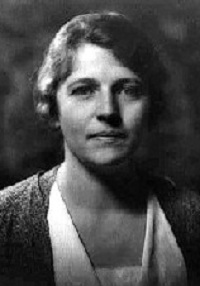 Pearl S. Buck
Pearl S. Buck
1892-1973
Pearl Sydenstricker Buck (June 26, 1892-March 6, 1973), also known by her Chinese name, Sai Zhenzhu, was an American writer who spent most of her time until 1934 in China. Her novel, The Good Earth, was the bestselling fiction book in the U.S. in 1931-32 and won the Pulitzer Prize in 1932. In 1938, she became the first American woman to be awarded the Nobel Prize in Literature “for her rich and truly epic descriptions of peasant life in China and for her biographical masterpieces.”
Buck was born in Hillsboro, West Virginia, to Caroline Stulting (1857-1921) and Absalom Sydenstricker. Her parents, Southern Presbyterian missionaries, traveled to China soon after their marriage on July 8, 1880, but returned to the United States for Pearl’s birth. When Pearl was three months old, the family returned to China to be stationed first in Zhenjiang (then often known as Jingjiang or, in the Postal Romanization, Tsingkiang). Pearl was raised in a bilingual environment, tutored in English by her mother and in classical Chinese by a Mr. Kung.
In 1911, Buck left China to attend Randolph-Macon Woman’s College in Lynchburg, Virginia, graduating Phi Beta Kappa in 1914 and a member of Kappa Delta Sorority. From 1914 to 1933, she served as a Presbyterian missionary, but her views later became highly controversial in the Fundamentalist-Modernist Controversy, leading to her resignation.
In 1914, she returned to China. She married an agricultural economist, John Lossing Buck, on May 13, 1917, and they moved to Suzhou, Anhui Province, a small town on the Huai River.
From 1920 to 1933, the Bucks made their home in Nanking (Nanjing), on the campus of Nanjing University, where both had teaching positions. Buck taught English literature at the University of Nanking and the National Central University (renamed to Nanjing University, in 1949). In 1920, the Bucks had a daughter, Carol, afflicted with phenylketonuria. In 1921, Buck’s mother died and shortly afterward her father moved in. In 1924, they left China for John Buck’s year of sabbatical and returned to the United States for a short time, during which Pearl earned her master’s degree from Cornell University. In 1925, the Bucks adopted Janice (later surnamed Walsh). That autumn, they returned to China.
The tragedies and dislocations that Buck suffered in the 1920s reached a climax in March 1927, during the “Nanking Incident.” In a confused battle involving elements of Chiang Kai-shek’s Nationalist troops, Communist forces and assorted warlords, several Westerners were murdered. Since her father Absalom was a missionary, the family decided to stay in Nanjing until the battle reached the city. When violence broke out, a poor Chinese family allowed them to hide in their hut while the family house was looted. The family spent a day terrified and in hiding, after which they were rescued by American gunboats. They traveled to Shanghai and then sailed to Japan, where they stayed for a year. They later moved back to Nanjing, though conditions remained dangerously unsettled. In 1934, they left China permanently.
During the Cultural Revolution, Buck, as a pre-eminent American writer of Chinese peasant life, was denounced as an “American cultural imperialist.” Buck was “heartbroken” when Madame Mao and high-level Chinese officials prevented her from visiting China with Richard Nixon in 1972.
Pearl S. Buck died of lung cancer on March 6, 1973, in Danby, Vermont, and was interred in Green Hills Farm in Perkasie, Pennsylvania.
Source: http://en.wikipedia.org/wiki/Pearl_S._Buck
 Bibliography
Bibliography
Press your browser’s BACK button to return to the previous page.
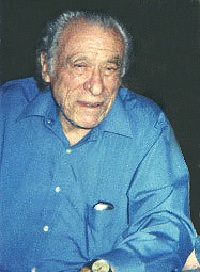 Charles Bukowski
Charles Bukowski
1920-1994
Henry Charles Bukowski (August 16, 1920-March 9, 1994) was an American poet, novelist and short story writer. His writing was influenced by the social, cultural and economic ambience of his home city of Los Angeles. It is marked by an emphasis on the ordinary lives of poor Americans, the act of writing, alcohol, relationships with women and the drudgery of work. Bukowski wrote thousands of poems, hundreds of short stories and six novels, eventually publishing more than 60 books.
Bukowski was born as Heinrich Karl Bukowski in Andernach, Germany, to Heinrich Bukowski and Katharina (nee Fett). Charles’ mother was a native German and his father was an American serviceman. The family settled in South Central Los Angeles in 1930, the city where Charles Bukowski’s father and grandfather had previously worked and lived.
After graduating from Los Angeles High School, Bukowski attended Los Angeles City College for two years, taking courses in art, journalism and literature, before quitting at the start of World War II. He then moved to New York to begin a career as a writer.
When Bukowski was 24, his short story, “Aftermath of a Lengthy Rejection Slip,” was published in Story magazine. Two years later, he published another short story, “20 Tanks from Kasseldown.” Failing to break into the literary world, Bukowski grew disillusioned with the publication process and quit writing for almost a decade, a time that he referred to as a “10-year drunk.” These “lost years” formed the basis for his later semi-autobiographical chronicles.
In 1955, he was treated for a near-fatal bleeding ulcer. After leaving the hospital he began to write poetry. Jon and Louise Webb, now recognized as giants of the post-war “small-press movement,” published The Outsider literary magazine and featured some of Bukowski’s poetry. Under the Loujon Press imprint, they published Bukowski’s “It Catches My Heart in Its Hands” in 1963 and “Crucifix in a Deathhand” in 1965.
Beginning in 1967, Bukowski wrote the column, Notes of a Dirty Old Man, for Los Angeles’ Open City, an underground newspaper. When Open City was shut down in 1969, the column was picked up by The Los Angeles Free Press as well as the hippie underground paper NOLA Express in New Orleans.
In 1969, Bukowski accepted an offer from Black Sparrow Press publisher John Martin and quit his post office job to dedicate himself to full-time writing. He was then 49 years old. Less than one month after leaving the postal service he finished his first novel, Post Office.
Bukowski died of leukemia on March 9, 1994, in San Pedro, California, aged 73, shortly after completing his last novel, Pulp.
Source: http://en.wikipedia.org/wiki/Charles_Bukowski
 Bibliography
Bibliography
Press your browser’s BACK button to return to the previous page.
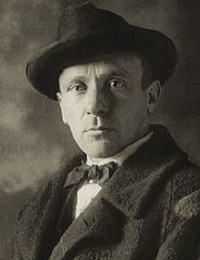 Mikhail Bulgakov
Mikhail Bulgakov
1891-1940
Mikhail Afanasyevich Bulgakov (May 15, 1891-March 10, 1940 was a Soviet Russian writer and playwright active in the first half of the 20th century. He is best known for his novel, The Master and Margarita.
Bulgakov was born in Kiev, at that time in the Russian Empire. From childhood Bulgakov was drawn to theater. At home, he wrote comedies, which his brothers and sisters acted out. After graduation from the Gymnasium in 1909, Bulgakov entered the Medical Faculty of St. Vladimir University, which he finished with special commendation to become a physician at the Kiev Military Hospital. At the outbreak of World War I, he volunteered with the Red Cross as a medical doctor and was sent directly to the frontline, where he was badly injured at least twice.
In 1916, Bulgakov graduated from the Medical Department of Kiev University and, after serving as a surgeon at Chernovtsy hospital, was appointed provincial physician to Smolensk province. His life in those days is reflected in his Country Doctor’s Notebook.
After illness Bulgakov abandoned his career as a doctor for that of a writer. His first book was an almanac of feuilletons called Future Perspectives, written and published the same year. In December 1919, Bulgakov wrote and saw his first two plays, Self-Defence and The Turbin Brothers, being produced for the city theater stage with great success.
After travelling through the Caucasus, Bulgakov headed for Moscow. To make a living, he started working as a correspondent and feuilletons writer for the newspapers Gudok, Krasnaia Panorama and Nakanune, based in Berlin. For the almanac Nedra, he wrote Diaboliad, The Fatal Eggs (1924) and Heart of a Dog (1925).
When one of Moscow’s theatre directors severely criticized Bulgakov, Stalin personally protected him. Stalin found work for the playwright at a small Moscow theatre, and next the Moscow Art Theatre (MAT). On October 5, 1926, Days of the Turbins, the play that continued the theme of The White Guard, was premiered at the MAT.
Ivan Vasilievich, Last Days (Pushkin) and Don Quixote were banned. The premier of another, Moliere (The Cabal of Hypocrites), received bad reviews in Pravda and the play was withdrawn from the theater repertoire. In 1928, Zoyka’s Apartment and The Purple Island were staged in Moscow; both comedies were accepted by the public with great enthusiasm.
By March 1929, Bulgakov’s career was ruined when government censorship prevented the publication of any of his work and staging of any of his plays. During the last decade of his life, Bulgakov continued to work on The Master and Margarita, wrote plays, critical works, stories and made several translations and dramatizations of novels and librettos.
Mikhail Bulgakov died from nephrosclerosis (an inherited kidney disorder) on March 10, 1940.
Source: http://en.wikipedia.org/wiki/Mikhail_Bulgakov
 Bibliography
Bibliography
Press your browser’s BACK button to return to the previous page.
 Carlos Bulosan
Carlos Bulosan
1911-1956
Carlos Bulosan was born in the Philippines in the rural farming village of Mangusmana, near the town of Binalonan (Pangasinan province, Luzon island). He was the son of a farmer and spent most of his upbringing in the countryside with his family. Like many families in the Philippines, Bulosan’s family struggled to survive during times of economic hardship. Many families were impoverished and many more would suffer because of the conditions in the Philippines created by U.S. colonization. Rural farming families like Bulosan’s family experienced severe economic disparity due to the growing concentration of wealth and power in the hands of the economic and political elite. Determined to help support his family and further his education, he decided to come to America with the dream to fulfill these goals.
Traveling by ship, Bulosan arrived in Seattle on July 22, 1930 at the age of 17. With only three years of education from the Philippines, he spoke little English and had barely any money left. Desperate to survive, he soon began working various low-paying jobs: Servicing in hotels, harvesting in the fields and even embarking to the Alaskan canneries. During his hardships in finding employment, he experienced much economic difficulty and racial brutality that significantly damaged his health and eventually changed his perception of America.
From several years of racist attacks, starvation and sickness, Bulosan underwent surgery for tuberculosis in Los Angeles. His health condition with tuberculosis forced him to undergo three operations where he lost most of the right side of his ribs and the function of one lung. But he recovered and stayed in the hospital for about two years, where he spent much of his time reading and writing.
The discrimination and unhealthy working conditions Bulosan had experienced in many of his workplaces encouraged him to participate in union organizing with other Filipinos and various workers. He become a self-educated and prolific writer determined to voice the struggles he had undergone as a Filipino coming to America and the struggles of other people he had witnessed. Like many of his fellow Filipinos in his time, he never had the opportunity to return to the Philippines. After years of hardship and flight, he passed away in Seattle suffering from an advanced stage of bronchopneumonia. He is buried at Queen Anne Hill in Seattle.
Source: http://www.bulosan.org/html/bulosan_biography.html
 Bibliography
Bibliography
Press your browser’s BACK button to return to the previous page.
 Edward Bulwer-Lytton
Edward Bulwer-Lytton
1803-1873
Edward Bulwer-Lytton was born on May 25, 1803. His father was General William Earle Bulwer of Heydon Hall and Wood Dalling, Norfolk. Bulwer-Lytton’s mother was Elizabeth Barbara Lytton. On February 20, 1844, in accordance with his mother’s will, he changed his surname from “Bulwer” to “Bulwer-Lytton” and assumed the arms of Lytton by royal license. His widowed mother had done the same in 1811.
When Bulwer-Lytton was four his father died and his mother moved to London. He was a delicate, neurotic child and was discontented at a number of boarding schools. But he was precocious and was encouraged him to publish, at the age of 15, an immature work, Ishmael and Other Poems.
In 1822, he entered Trinity College, Cambridge, but shortly afterward moved to Trinity Hall. In 1825, he won the Chancellor’s Gold Medal for English verse. In the following year he took his B.A. degree and printed, for private circulation, a small volume of poems, Weeds and Wild Flowers.
The death of Bulwer-Lytton’s mother in 1843 greatly saddened him. In 1866, he was raised to the peerage as Baron Lytton.
The English Rosicrucian society, founded in 1867 by Robert Wentworth Little, claimed Bulwer-Lytton as their “Grand Patron,” but he wrote to the society complaining that he was “extremely surprised” by their use of the title, as he had “never sanctioned such.” Nevertheless, a number of esoteric groups have continued to claim Bulwer-Lytton as their own, chiefly because some of his writings – such as the 1842 book Zanoni – have included Rosicrucian and other esoteric notions.
Bulwer-Lytton had long suffered with a disease of the ear and for the last two or three years of his life he lived in Torquay, nursing his health. Following an operation to cure deafness, an abscess formed in his ear and burst; he endured intense pain for a week and died at 2 a.m. on January 18, 1873 just short of his 70th birthday.
His unfinished history, Athens: Its Rise and Fall, was published posthumously.
Source: http://en.wikipedia.org/wiki/Edward_Bulwer-Lytton,_1st_Baron_Lytton#Life
 Bibliography
Bibliography
Press your browser’s BACK button to return to the previous page.
 Ivan Bunin
Ivan Bunin
1870-1953
Ivan Alekseevich Bunin (October 10, 1870, Voronezh, Russia-November 8, 1953) was a Russian poet and novelist. He worked as a journalist and clerk while writing and translating poetry, but he made his name as a short story writer with such masterpieces as the title story of “The Gentleman from San Francisco” (1916). His other works include: the novella, Mitya’s Love (1925); the collection, Dark Avenues and Other Stories (1943); fictional autobiography, memoirs and books about Leo Tolstoy and Anton Chekhov.
He was the first Russian awarded the Nobel Prize for Literature (1933) and is among the best stylists in the language.
He died in a Paris attic flat in the early hours of November 8, 1953. Heart failure, cardiac asthma and lung sclerosis were cited as the causes of death.
Source: http://www.answers.com/topic/ivan-alekseyevich-bunin
 Bibliography
Bibliography
Press your browser’s BACK button to return to the previous page.
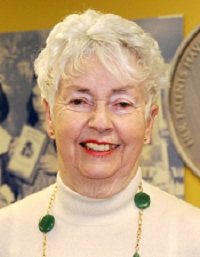 Eve Bunting
Eve Bunting
1928-
Anne Evelyn Bunting (born December 19, 1928), better known as Eve Bunting, is an Irish author who has written more than 250 books. Her work covers a broad array of subjects and includes fiction and nonfiction books. Her novels are primarily aimed at children and young adults, but her works also include picture books. While many of her books are set in Northern Ireland, where she grew up, her topics and settings range from Thanksgiving to riots in Los Angeles. Bunting’s first book, The Two Giants, was published in 1971, and several books were to be published in 2011. Due to the popularity of her books with children, she has been listed as one of the Educational Paperback Association’s top 100 authors.
Bunting was born in Maghera to Sloan Edmund Bunting, a postmaster, and Mary (nee Canning) Bunting, a homemaker. She married business executive Edward Davison Bunting, whom she met in college, on March 26, 1950, and has three children: Christine, Sloan and Glenn. She was educated in Belfast, Northern Ireland, attending Methodist College in the early 1940s and graduating in 1945; she then attended Queen’s University, where she met her husband. After marrying, the couple moved to Scotland and started their family.
In 1958, Bunting immigrated to the United States with her husband and children, later attending Pasadena City College in 1959. Bunting then enrolled in a community college writing course. She felt the desire to write about her heritage. Bunting’s first published story, The Two Giants (1971), focused an Irish folktale about Finn McCool who outsmarted Culcullan, a terrible Scottish giant. this publication gave Bunting confidence and passion to pursue a writing career.
Bunting has taught writing classes at the University of California, Los Angeles, and at various writers’ conferences. She is a member of International PEN and the Society of Children’s Book Writers and Illustrators. She continues to write at her home in Pasadena, California, and has six grandchildren.
Source: http://en.wikipedia.org/wiki/Eve_Bunting
 Bibliography
Bibliography
Press your browser’s BACK button to return to the previous page.
 John Bunyan
John Bunyan
1628-1688
John Bunyan had very little schooling. He followed his father in the tinker’s trade, and he served in the parliamentary army from 1644 to 1647. He married in 1649 and lived in Elstow until 1655, when his wife died. He then moved to Bedford and married again in 1659. Bunyan was received into the Baptist church in Bedford by immersion in 1653.
In 1655, Bunyan became a deacon and began preaching, with marked success from the start. In 1658, he was indicted for preaching without a license. The authorities were fairly tolerant of him for a while, and he did not suffer imprisonment until November 1660, when he was taken to the county jail in Silver Street, Bedford, and there confined (with the exception of a few weeks in 1666) for 12 years until January 1672. Bunyan afterward became pastor of the Bedford church. In March of 1675 he was again imprisoned for preaching publicly without a license, this time being held in the Bedford town jail. After six months he was freed and was not bothered again by the authorities.
Bunyan wrote The Pilgrim’s Progress in two parts, of which the first appeared in London in 1678, which he had begun during his imprisonment in 1676. The second part appeared in 1684. The earliest edition in which the two parts were combined in one volume came out in 1728.
Bunyan wrote many other books, including one that discussed his inner life and reveals his preparation for his appointed work, Grace Abounding to the Chief of Sinners (1666). Bunyan became a popular preacher as well as a very voluminous author, though most of his works consist of expanded sermons. In theology he was a Puritan, but not a partisan. He was no scholar, except of the English Bible, but that book he knew thoroughly. He also drew much influence from Martin Luther’s Commentary on the Epistle to the Galatians.
Sometime before his final release from prison, Bunyan became involved in a controversy with two theologians of his day: Kiffin and Paul. In 1673, he published his “Differences in Judgment about Water-Baptism no Bar to Communion,” in which he took the ground that “the Church of Christ hath not warrant to keep out of the communion the Christian that is discovered to be a visible saint of the word, the Christian that walketh according to his own light with God.” While he agreed as a Baptist that water baptism was God’s ordinance, he refused to make “an idol of it,” and he disagreed with those who would dis-fellowship from Christians who did not adhere to water baptism.
On a trip to London, Bunyan caught a severe cold and he died at the house of a friend at Snow Hill on August 31, 1688. His grave lies in the cemetery at Bunhill Fields in London.
Source: http://www.ccel.org/b/bunyan
 Bibliography
Bibliography
Press your browser’s BACK button to return to the previous page.
 Anthony Burgess
Anthony Burgess
1917-1993
John Burgess Wilson (February 25, 1917-November 22, 1993), who published under the pen name Anthony Burgess, was an English author, poet, playwright, composer, linguist, translator and critic.
The dystopian satire, A Clockwork Orange, is Burgess’ most famous novel, though he dismissed it as one of his lesser works. It was adapted into a highly controversial 1971 film by Stanley Kubrick, which Burgess said was chiefly responsible for the popularity of the book. Burgess produced numerous other novels, including the Enderby quartet and Earthly Powers. He was a prominent critic, writing acclaimed studies of classic writers such as William Shakespeare, James Joyce, D.H. Lawrence and Ernest Hemingway.
Burgess was an accomplished musician and linguist. He composed more than 250 musical works, including a first symphony around age 18, wrote a number of libretti and translated, among other works, Cyrano de Bergerac, Oedipus the King and Carmen.
Burgess died on November 22, 1993 in London, from lung cancer.
Source: http://en.wikipedia.org/wiki/Anthony_Burgess
 Bibliography
Bibliography
Press your browser’s BACK button to return to the previous page.
 Edmund Burke
Edmund Burke
1729-1797
Edmund Burke, a philosopher and politician, distinguished over all men of his times for eloquence and political foresight, was born in 1730 in Dublin, where his father had an extended practice as an attorney. In 1744 Burke entered the university at Dublin. In February 1748, he graduated B.A. and in 1751 took his degree as Master of Arts.
Burke, when yet at the university, had achieved a local reputation for literary talent and eloquence. His first important publication was the celebrated “Vindication of Natural Society,” written in imitation and ridicule of the style and reasoning of Lord Bolingbroke, in which, with well concealed irony, he confuted his Lordship’s views of society by a reductia ad absurdum. Soon after, in the same year, appeared his well-known essay, “The Sublime and Beautiful,” which obtained a rapid popularity, and its writer soon found himself courted by the eminent men of his time.
His parliamentary life extended from 1766 to 1794 without intermission. After a career remarkable for the laboriousness, earnestness and brilliancy with which every duty was discharged, and extending nearly 30 years, he retired at last, receiving the thanks of the commons for his numerous public services and rewarded by government, on the express request of his sovereign, with pensions amounting in all to 3,700 pounds. As Paymaster of the Forces he, with a scrupulous regard to public economy, sacrificed all the perquisites of his office, exhibiting a severe integrity unexampled among public men. Toward America, he advocated a policy of justice and conciliation which, had it been adopted, would have averted the horrors of the War of Independence and retained the Colonies in amity to the mother country. To the advocacy of every cause he espoused, he brought a capacity for patient research that was unlimited and an eloquence that has never been transcended.
On February 13, 1785, he commenced his celebrated speech opening the trial of Warren Hastings, the most remarkable trial, perhaps, in the history of the world. This speech lasted more than four days and has been characterized as “a tempest of invective and eloquence.” No idea can be conveyed of the effect it produced. The trial lasted more than seven years and closed with another great and splendid oration from Burke, lasting more than nine days.
Burke died on July 9, 1797, in his 68th year.
Source: http://www.sacklunch.net/biography/B/EdmundBurke.html
 Bibliography
Bibliography
Press your browser’s BACK button to return to the previous page.
 Frances Hodgson Burnett
Frances Hodgson Burnett
1849-1924
Frances Eliza Hodgson Burnett (November 24, 1849-October 29, 1924) was an English playwright and author. She is best known for her children’s stories, in particular The Secret Garden, A Little Princess and Little Lord Fauntleroy.
Born Frances Eliza Hodgson, she lived in Cheetham Hill, Manchester. After the death of her father the family was forced to sell their home and suffered economic hardship. Until she was 16 she lived in Salford, and then the family emigrated to Knoxville, Tennessee. There Burnett turned to writing to help earn money for the family, publishing stories in magazines by the time she was 19. In 1872, she married Swan Burnett. They lived in Paris for two years, where their two sons were born, before returning to the United States to live in Washington D.C. There she began to write novels, the first of which, That Lass o’ Lowries, was published to good reviews. The publication of Little Lord Fauntleroy in 1886 made her a popular writer of children’s fiction, although her romantic adult novels written in the 1890s were also popular. She wrote and helped to produce stage versions of Little Lord Fauntleroy and The Little Princess.
Burnett enjoyed socializing and lived a lavish lifestyle. Beginning in the 1880s, she began to travel to England frequently and bought a home there in the 1890s.
Burnett lived for the last 17 years of her life in Plandome, New York, where she died on October 29, 1924.
Source: http://en.wikipedia.org/wiki/Frances_Hodgson_Burnett
 Bibliography
Bibliography
Press your browser’s BACK button to return to the previous page.
 Frances (Fanny) Burney
Frances (Fanny) Burney
1752-1840
Frances Burney (June 13, 1752-January 6, 1840), also known as Fanny Burney and, after her marriage, as Madame d’Arblay, was an English novelist, diarist and playwright. She was born in Lynn Regis, now King’s Lynn, England, to musical historian Dr. Charles Burney and Mrs. Esther Sleepe Burney. The third of six children, she was self-educated and began writing what she called her “scribblings” at the age of 10. In 1793, aged 42, she married a French exile, General Alexandre D’Arblay. After a lengthy writing career, and travels that took her to France for more than 10 years, she settled in Bath, England, where she died on January 6, 1840.
She published her first novel, Evelina, anonymously in 1778. When the book’s authorship was revealed, it brought her almost immediate fame due to its unique narrative and comic strengths. She followed with Cecilia in 1782, Camilla in 1796 and The Wanderer in 1814. With one exception, Burney never succeeded in having her plays performed, largely due to objections from her father, who thought that publicity from such an effort would be damaging to her reputation. The exception was Edwy and Elgiva, which unfortunately was not well received by the public and closed after the first night’s performance.
Burney wrote four novels, eight plays, one biography and 20 volumes of journals and letters. In addition to the critical respect she receives for her own writing, she is recognized as a literary precursor to prominent authors who came after her.
Source: http://en.wikipedia.org/wiki/Frances_Burney
 Bibliography
Bibliography
Press your browser’s BACK button to return to the previous page.
 Olive Ann Burns
Olive Ann Burns
1924-1990
Olive Ann Burns (July 17, 1924-July 4, 1990) was an American writer from Georgia best known for her single completed novel, Cold Sassy Tree, published in 1984.
Burns was born in Banks County, Georgia. Her father was a farmer but was forced to sell his farm in 1931 during the Great Depression. The Burns family then moved to Commerce, Georgia. Burns attended Mercer University, where she wrote for the college magazine. Her sophomore year she transferred to the University of North Carolina at Chapel Hill, where she majored in journalism.
Burns worked for The Atlanta Journal and wrote under the pseudonym “Amy Larkin.” She married Andy Sparks, a fellow journalist. In 1971, Burns began writing down family stories as dictated by her parents. In 1975, she was diagnosed with lymphoma and began to change the family stories into a novel that would later become Cold Sassy Tree. The novel was finally published eight years after it was begun, in 1984. Burns received so many letters pleading for a followup novel that she began writing Leaving Cold Sassy.
Burns died of heart failure in 1990, at age 65, in a hospital in Atlanta, Georgia, before finishing the manuscript. The uncompleted novel was published in 1992, along with her notes.
Source: http://en.wikipedia.org/wiki/Olive_Ann_Burns
 Bibliography
Bibliography
Press your browser’s BACK button to return to the previous page.
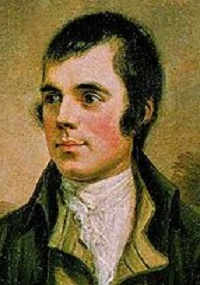 Robert Burns
Robert Burns
1759-1796
Robert Burns (January 25, 1759-July 21, 1796), also known as Rabbie Burns, Scotland’s favorite son, the Ploughman Poet, the Bard of Ayrshire and, in Scotland, as simply The Bard, was a Scottish poet and a lyricist. He is widely regarded as the national poet of Scotland and is celebrated worldwide. He is the best known of the poets who have written in the Scots language, although much of his writing is also in English and a “light” Scots dialect, accessible to an audience beyond Scotland. He also wrote in standard English and, in these pieces, his political or civil commentary is often at its most blunt.
He is regarded as a pioneer of the Romantic movement and after his death became a great source of inspiration to the founders of both liberalism and socialism. A cultural icon in Scotland and among the Scottish Diaspora around the world, celebration of his life and work became almost a national charismatic cult during the 19th and 20th centuries. His influence has long been strong on Scottish literature.
As well as making original compositions, Burns also collected folk songs from across Scotland, often revising or adapting them. His poem and song, “Auld Lang Syne,” is often sung at Hogmanay (the last day of the year), and “Scots Wha Hae” served for a long time as an unofficial national anthem of the country. Other poems and songs of Burns that remain well-known across the world today include: “A Red, Red Rose”; “A Man’s a Man for A’ That”; “To a Louse”; “To a Mouse”; “The Battle of Sherramuir”; “Tam o’ Shanter”; and “Ae Fond Kiss.”
Burns was born two miles south of Ayr, in Alloway, South Ayrshire, Scotland, the eldest of the seven children of William Burness, a self-educated tenant farmer from Dunnottar, The Mearns, and Agnes Broun, the daughter of a tenant farmer from Kirkoswald, South Ayrshire.
The habits of intemperance are said to have aggravated his longstanding possible rheumatic heart condition. On the morning of July 21, 1796, Robert Burns died in Dumfries at the age of 37.
Source: http://en.wikipedia.org/wiki/Robert_Burns
 Bibliography
Bibliography
Press your browser’s BACK button to return to the previous page.
 Edgar Rice Burroughs
Edgar Rice Burroughs
1875-1950
Edgar Rice Burroughs (September 1, 1875-March 19, 1950) was an American author, best known for his creation of the jungle hero, Tarzan, and the heroic Mars adventurer, John Carter, although he produced works in many genres.
Burroughs was born on September 1, 1875, in Chicago (he later lived for many years in the neighboring suburb of Oak Park), the only son of a businessman and war veteran, Major George Tyler Burroughs (1833-1913) and his wife, Mary Evaline (Zieger) Burroughs (1840-1920). He was educated at a number of local schools and, during the Chicago influenza epidemic in 1891, he spent a half year at his brother’s ranch on the Raft River in Idaho. He then attended the Phillips Academy in Andover, Massachusetts, and then the Michigan Military Academy. Graduating in 1895, and failing the entrance exam for the United States Military Academy at West Point, he ended up as an enlisted soldier with the 7th U.S. Cavalry in Fort Grant, Arizona Territory. After being diagnosed with a heart problem and thus found ineligible for a commission, he was discharged in 1897.
By 1911, after seven years of low wages, he was working as a pencil sharpener wholesaler and began to write fiction. By this time Burroughs and his wife, Emma, had two children, Joan and Hulbert. During this period, he had copious spare time and he began reading many pulp fiction magazines. Aiming his work at these publications, his first story, “Under the Moons of Mars,” was serialized in All-Story Magazine in 1912 and earned Burroughs $400 (roughly the equivalent of $7,600 in 2004).
Burroughs soon took up writing full-time and, by the time the run of “Under the Moons of Mars” had finished, he had completed two novels, including Tarzan of the Apes, which was published from October 1912 and went on to begin his most successful series. In 1913, Burroughs and Emma had their third and last child, John Coleman.
Burroughs also wrote popular science fiction and fantasy stories involving Earthly adventurers transported to various planets (notably Barsoom, Burroughs’ fictional name for Mars, and Amtor, his fictional name for Venus), lost islands and into the interior of the hollow earth in his Pellucidar stories, as well as westerns and historical romances. Along with All-Story, many of his stories were published in Argosy magazine.
At the time of the attack on Pearl Harbor, Burroughs was a resident of Hawaii and, despite being in his late 60s, he applied for permission to become a war correspondent. This permission was granted and he became one of the oldest war correspondents for the U.S. during World War II. After the war ended, Burroughs moved back to Encino, California, where, after many health problems, he died of a heart attack on March 19, 1950, having written almost 70 novels.
Source: http://en.wikipedia.org/wiki/Edgar_Rice_Burroughs
 Bibliography
Bibliography
Press your browser’s BACK button to return to the previous page.
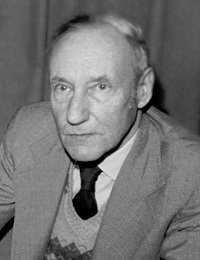 William S. Burroughs
William S. Burroughs
1914-1997
William Seward Burroughs II (February 5, 1914-August 2, 1997) was an American novelist, poet, essayist and spoken-word performer. A primary figure of the Beat Generation and a major postmodernist author, he is considered to be “one of the most politically trenchant, culturally influential and innovative artists of the 20th century.” Burroughs wrote 18 novels and novellas, six collections of short stories and four collections of essays. Five books have been published of his interviews and correspondences. He also collaborated on projects and recordings with numerous performers and musicians and made many appearances in films.
He was born to a wealthy family in St. Louis, Missouri, grandson of the inventor and founder of the Burroughs Corporation, William Seward Burroughs I, and nephew of public relations manager Ivy Lee.
Burroughs began writing essays and journals in early adolescence. He left home in 1932 to attend Harvard University, studying English and anthropology as a postgraduate, and later attending medical school in Vienna. After being turned down by the Office of Strategic Services and U.S. Navy in 1942 to serve in World War II, he dropped out and became afflicted with the drug addiction that affected him for the rest of his life. In 1943, while living in New York City, he befriended Allen Ginsberg and Jack Kerouac, the mutually influential foundation of what became the countercultural movement of the Beat Generation.
Much of Burroughs’ work is semi-autobiographical, primarily drawn from his experiences as a heroin addict, as he lived throughout Mexico City, London, Paris, Berlin, the South American Amazon and Tangier in Morocco. Finding success with his confessional first novel, Junkie (1953), Burroughs is perhaps best known for his third novel, Naked Lunch (1959). With Brion Gysin, he also popularized the literary cut-up technique in works such as The Nova Trilogy (1961-64). In 1983, Burroughs was elected to the American Academy and Institute of Arts and Letters, and in 1984 was awarded the Ordre des Arts et des Lettres by France.
Burroughs died at his home in Lawrence, Kansas, after suffering a heart attack in 1997.
Source: http://en.wikipedia.org/wiki/William_S._Burroughs
 Bibliography
Bibliography
Press your browser’s BACK button to return to the previous page.
 Sir Richard Francis Burton
Sir Richard Francis Burton
1821-1890
Captain Sir Richard Francis Burton (March 19, 1821-October 20, 1890) was a British explorer, translator, writer, soldier, orientalist, ethnologist, spy, linguist, poet, fencer and diplomat. He was known for his travels and explorations within Asia and Africa, as well as his extraordinary knowledge of languages and cultures. According to one count, he spoke 29 European, Asian and African languages.
Burton’s best-known achievements include travelling in disguise to Mecca, an unexpurgated translation of One Thousand and One Nights (also commonly called The Arabian Nights in English after Andrew Lang’s abridgement), bringing The Kama Sutra to publication in English and journeying with John Hanning Speke as the first Europeans led by Africa’s greatest explorer guide, Sidi Mubarak Bombay, utilizing route information by Indian and Omani merchants who traded in the region to visit the Great Lakes of Africa in search of the source of the Nile. Burton extensively criticized colonial policies (to the detriment of his career) in his works and letters. He was a prolific and erudite author and wrote numerous books and scholarly articles about subjects including human behavior, travel, fencing, sexual practices and ethnography. A unique feature of his books is the copious footnotes and appendices containing remarkable observations and unexpurgated information.
He was a captain in the army of the East India Company serving in India (and later, briefly, in the Crimean War). Following this he was engaged by the Royal Geographical Society to explore the east coast of Africa and led an expedition, guided by the locals, that discovered Lake Tanganyika. In later life, he served as British consul in Fernando Po, Santos, Damascus and, finally, Trieste. He was a Fellow of the Royal Geographical Society and was awarded a knighthood (KCMG) in 1886.
Burton died of a heart attack early on the morning of October 20, 1890 in Trieste.
Source: http://en.wikipedia.org/wiki/Richard_Francis_Burton
 Bibliography
Bibliography
Press your browser’s BACK button to return to the previous page.
 Octavia Butler
Octavia Butler
1947-2006
Octavia Estelle Butler (June 22, 1947-February 24, 2006) was an American science fiction writer, one of the best-known among the few African-American women in the field. She has won both Hugo and Nebula awards. In 1995, she became the first science fiction writer to receive the MacArthur Foundation Genius Grant.
Butler was born and raised in Pasadena, California. She was raised by her grandmother and her mother, who worked as a maid in order to support the family. Butler grew up in a struggling, racially mixed neighborhood.
Octavia Jr., nicknamed Junie, was shy and a daydreamer, and was later diagnosed as being dyslexic. She began writing at the age of 10 “to escape loneliness and boredom;” she was 12 when she began a lifelong interest in science fiction.
After getting an associate’s degree from Pasadena City College in 1968, she next enrolled at California State University, Los Angeles. She eventually left Cal State and took writing classes through UCLA extension. She remained, throughout her career, a self-identified science fiction fan, an insider who rose from within the ranks of the field.
Butler moved to Seattle, Washington, in November 1999. She died outside of her home in Lake Forest Park, Washington, on February 24, 2006, at the age of 58.
Source: http://en.wikipedia.org/wiki/Octavia_E._Butler
 Bibliography
Bibliography
Press your browser’s BACK button to return to the previous page.
 Robert Olen Butler
Robert Olen Butler
1945-
Robert Olen Butler (born January 20, 1945) is an American fiction writer. His short story collection, A Good Scent from a Strange Mountain, was awarded the Pulitzer Prize for fiction in 1993.
Butler was born in Granite City, Illinois, to Robert Olen Butler Sr., an actor and theater professor who became the chairman of the theater department of St. Louis University, and his wife, the former Lucille Frances Hall, an executive secretary.
Butler attended Northwestern University as a theater major (B.S., 1967) and switched to playwriting at the University of Iowa (M.A., 1969).
Butler served in Vietnam from 1969 to 1971, first as a counter-intelligence special agent for the Army and later as a translator. He rose to the rank of sergeant in the Army Military Intelligence Corps. His experiences during that period informed his writings and, as a result, in 1987 Butler received the Tu Do Chinh Kien Award from the Vietnam Veterans of America for outstanding contributions to American culture by a veteran.
Butler is the author of 12 novels and six short story collections. Butler began writing novels on the Long Island Railroad while working as a publicist for Fairchild Publications. His first novel was The Alleys of Eden, which was published in 1981. Butler’s second novel was Sun Dogs (1983).
Butler’s stories have appeared in such publications as The New Yorker, Esquire, Harper’s, The Atlantic Monthly, GQ and Zoetrope: All-Story. He has had stories included in a combined 12 editions of The Best American Short Stories, New Stories from the South and numerous college literature textbooks. Butler has also written screenplays for film and television, most of them based on other writers’ material.
Butler’s short story collections, Tabloid Dreams (1996) and Had a Good Time (2004), take their inspiration from popular culture. Severance was his 2006 collection of 240-word short stories about the post-beheading thoughts of decapitated individuals. His companion collection, Intercourse, comprising 100 very short stories, revealed the inner monologues of couples (often famous) engaged in sexual intercourse. Weegee Stories, presenting the inner monologues of the subjects of 60 iconic photographs of Arthur “Weegee” Fellig, continued his interest in the form.
As further evidence of his predilection for self-reinvention, in 2009 he published Hell, a “roaring satire” of a novel set entirely in the underworld. His 2011 novel, A Small Hotel, is described as a “sexy novel of psychological suspense.”
Butler taught creative writing at McNeese State University in Lake Charles, Louisiana, from 1985 to 2000. He then joined the faculty of Florida State University as a Francis Eppes Distinguished Professor, holding the Michael Shaara Chair in Creative Writing, where he currently teaches.
Source: http://en.wikipedia.org/wiki/Robert_Olen_Butler
 Bibliography
Bibliography
Press your browser’s BACK button to return to the previous page.
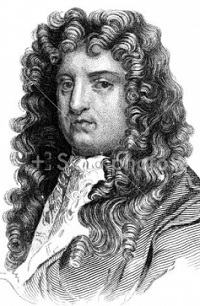 Samuel Butler
Samuel Butler
1612-1680
Samuel Butler was a poet and satirist. He is remembered now chiefly for a long satirical poem, “Hudibras.”
Butler was born in Strensham, Worcestershire, and was the son of a farmer. His date of birth is unknown, but there is documentary evidence for the date of his baptism. He was educated at the King’s School, Worcester, under Henry Bright, whose teaching is recorded favorably by Thomas Fuller, a contemporary writer, in his Worthies of England. In early youth Butler was a servant to the Countess of Kent. Through Lady Kent he met her steward, the jurist John Selden, who influenced his later writings. He also tried his hand at painting but was reportedly not very good at it.
After the Restoration, he became Secretary to the Richard Carbery, Lord President of Wales. In late 1662, the first part of “Hudibras” was published, and the other two in 1664 and 1678, respectively. One early purchaser of the first two parts was Samuel Pepys. While the diarist acknowledged that the book was the “greatest fashion,” he could not see why it was found to be so witty.
The popularity of “Hudibras” notwithstanding, Butler was not offered a place at Court. However, Butler is thought to have been in the employment of the Duke of Buckingham in the summer of 1670 and accompanied him on a diplomatic mission to France. Butler also received financial support in the form of a grant from King Charles II.
Butler died on September 25, 1680 and was buried at St. Paul’s, Covent Garden.
Source: http://en.wikipedia.org/wiki/Samuel_Butler_%28poet%29
 Bibliography
Bibliography
Press your browser’s BACK button to return to the previous page.
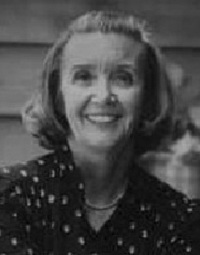 Betsy Byars
Betsy Byars
1928-2020
Betsy Cromer Byars (August 7, 1928-February 26, 2020) was an American author of children’s books. Her novel, Summer of the Swans, won the 1971 Newbery Medal. She also received a National Book Award for The Night Swimmers (1980) and an Edgar Award for Wanted … Mud Blossom (1991). In 1987, she received the Regina Medal for lifetime achievement from the Catholic Library Association.
Byars was born Betsy Cromer in Charlotte, North Carolina. She attended Furman University in Greenville, South Carolina, from 1946 to 1948, and graduated in 1950 from Queens College in Charlotte with a bachelor’s degree in English.
Cromer married Ed Byars on June 24, 1950, and they had three daughters and a son between 1951 and 1958. In 1956, she began writing for magazines. Her first book, Clementine, was published in 1962.
Betsy and Ed Byars were both licensed aircraft pilots and lived on an airstrip in Seneca, South Carolina, the bottom floor of their house being a hangar.
Byars retired in 1990. She died in Seneca on February 26, 2020.
Source: http://en.wikipedia.org/wiki/Betsy_Byars
 Bibliography
Bibliography
Press your browser’s BACK button to return to the previous page.
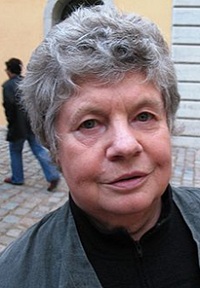 A.S. (Dame) Byatt
A.S. (Dame) Byatt
1936-
Dame Antonia Susan Duffy (born Antonia Susan Drabble, August 24, 1936, Sheffield, England) is an English novelist, poet and Booker Prize winner. She is the daughter of His Honour John Frederick Drabble, QC, and the late Kathleen Marie Bloor, and married to Peter Duffy. She is usually known as A.S. Byatt.
Byatt was educated at The Mount School, York, Newnham College Cambridge, Bryn Mawr in Pennsylvania and Somerville College, Oxford, though her research grant to the latter institution (dependent on single status) ended with her first marriage to Ian Byatt (later Sir Ian Byatt) in 1959.
She lectured in the Department of Extra-Mural Studies of London University (1962-71), the Central Saint Martins College of Art and Design and from 1972 to 1983 at University College, London.
Byatt’s first novel, The Shadow of the Sun, was published in 1964 and was followed by The Game (1967). The Virgin in the Garden (1978) is the first book in a quartet about the members of a Yorkshire family. The story continues in Still Life (1985), which won the PEN/Macmillan Silver Pen Award, and Babel Tower (1996). The fourth (and final) novel in the quartet is A Whistling Woman (2002). The Matisse Stories (1993) features three stories, each describing a painting by Henri Matisse that inspired Byatt, each the tale of an initially smaller crisis that shows the long-present unraveling in the protagonists’ lives.
Possession (1990) is her best-known novel, which parallels the emerging relationship of two contemporary academics with the past of two (fictional) 19th century poets they are researching. It won the Man Booker Prize in 1990. The Children’s Book was shortlisted for the 2009 Man Booker Prize. More recent books by Byatt have brought to the fore her interest in science, particularly cognitive science and zoology.
Byatt has written for the British intellectual journal Prospect and for The Guardian. She was awarded a CBE in 1990 and the DBE in 1999.
Source: http://en.wikipedia.org/wiki/A._S._Byatt
 Bibliography
Bibliography
Press your browser’s BACK button to return to the previous page.
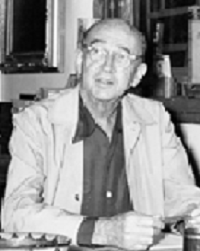 Witter Bynner
Witter Bynner
1881-1968
Harold Witter Bynner (August 10, 1881-June 1, 1968) was an American poet, writer and scholar, known for his long residence in Santa Fe, New Mexico, at what is now the Inn of the Turquoise Bear.
Bynner was born in Brooklyn, New York, and brought up in Brookline, Massachusetts. He graduated from Harvard University in 1902. Initially he pursued a career in journalism and edited McClure’s magazine. He then turned to writing, living in Cornish, New Hampshire, until about 1915.
Bynner had a short spell in academia in 1918-1919 during World War I, at the University of California, Berkeley, as Professor of Oral English. There, he composed “Canticle of Praise” and taught classes in poetry and verse writing. He was forced to leave after serving alcohol to freshmen during Prohibition.
He then traveled to China and studied Chinese literature. He subsequently produced many translations from Chinese. His verse showed both Japanese and Chinese influences, but the latter were major. Bynner became more of a modernist in consequence, where previously he had been inclined to parody Imagism and dismiss the orientalist pronouncements with which Ezra Pound was free.
Bynner settled in Santa Fe in a steady and acknowledged 30-year homosexual relationship with Robert Hunt. He became a friend of D.H. Lawrence and traveled with him and Frieda von Richthofen in Mexico; he much later in 1951 wrote about Lawrence, while he and his partner Willard Johnson are portrayed in Lawrence’s “The Plumed Serpent.” Bynner and Hunt had numerous parties at their house, hosting many notable writers, actors and artists, including Ansel Adams, Willa Cather, Igor Stravinsky, Edna St. Vincent Millay, Robert Frost, W.H. Auden, Aldous Huxley, Clara Bow, Errol Flynn, Rita Hayworth, Christopher Isherwood, Carl Van Vechten, Martha Graham, Georgia O’Keeffe and Thornton Wilder.
On January 18, 1965, Bynner had a severe stroke. He never recovered and required constant care until he died on June 1, 1968.
Source: http://en.wikipedia.org/wiki/Witter_Bynner
 Bibliography
Bibliography
Press your browser’s BACK button to return to the previous page.
 William Byrd
William Byrd
1674-1744
Colonel William Byrd II (March 28, 1674-August 26, 1744) was a planter, slave-owner and author from Charles City County, Virginia. He is considered the founder of Richmond, Virginia.
Byrd was born in Henrico County, Virginia, and educated at Felsted School, England, for the law. He was a member of the King’s Counsel for 37 years. He returned to the Colony following his schooling in England, lived in lordly estate on his plantation, Westover Plantation, and gathered the most valuable library in the Virginia Colony, numbering some 4,000 books. He was the founder of Richmond and provided the land where the city was laid out in 1737. His father, Colonel William Byrd I, came from England to settle in Virginia.
Byrd was a fellow of the Royal Society of Great Britain. He was the author of The Westover Manuscripts, published in 1841 under three titles (The History of the Dividing Line, A Journey to the Land of Eden and A Progress to the Mines) and, most famously, The Secret Diaries of William Byrd of Westover, all remarkable for their style, wit, keen observation and intrinsic interest to all.
William Byrd II died on August 26, 1744, and was buried at Westover Plantation, Virginia, British America.
Source: http://en.wikipedia.org/wiki/William_Byrd_II
 Bibliography
Bibliography
Press your browser’s BACK button to return to the previous page.
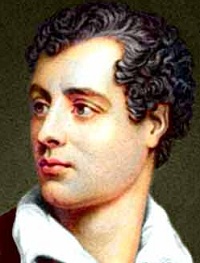 Lord Byron
Lord Byron
1788-1824
George Gordon Byron, 6th Baron Byron, later George Gordon Noel, 6th Baron Byron, (January 22, 1788-April 19, 1824), commonly known simply as Lord Byron, was a British poet and a leading figure in the Romantic movement. Among Byron’s best-known works are the brief poems “She Walks in Beauty,” “When We Two Parted” and “So, we’ll go no more a roving,” in addition to the narrative poems, “Childe Harold’s Pilgrimage” and “Don Juan.” He is regarded as one of the greatest British poets and remains widely read and influential.
Byron was celebrated in life for aristocratic excesses, including huge debts, numerous love affairs, rumors of a scandalous incestuous liaison with his half-sister and self-imposed exile. He was famously described by Lady Caroline Lamb as “mad, bad and dangerous to know.” He travelled to fight against the Ottoman Empire in the Greek War of Independence, for which Greeks revere him as a national hero.
He died at 36 from a fever contracted while in Missolonghi in Greece.
Source: http://en.wikipedia.org/wiki/Lord_Byron